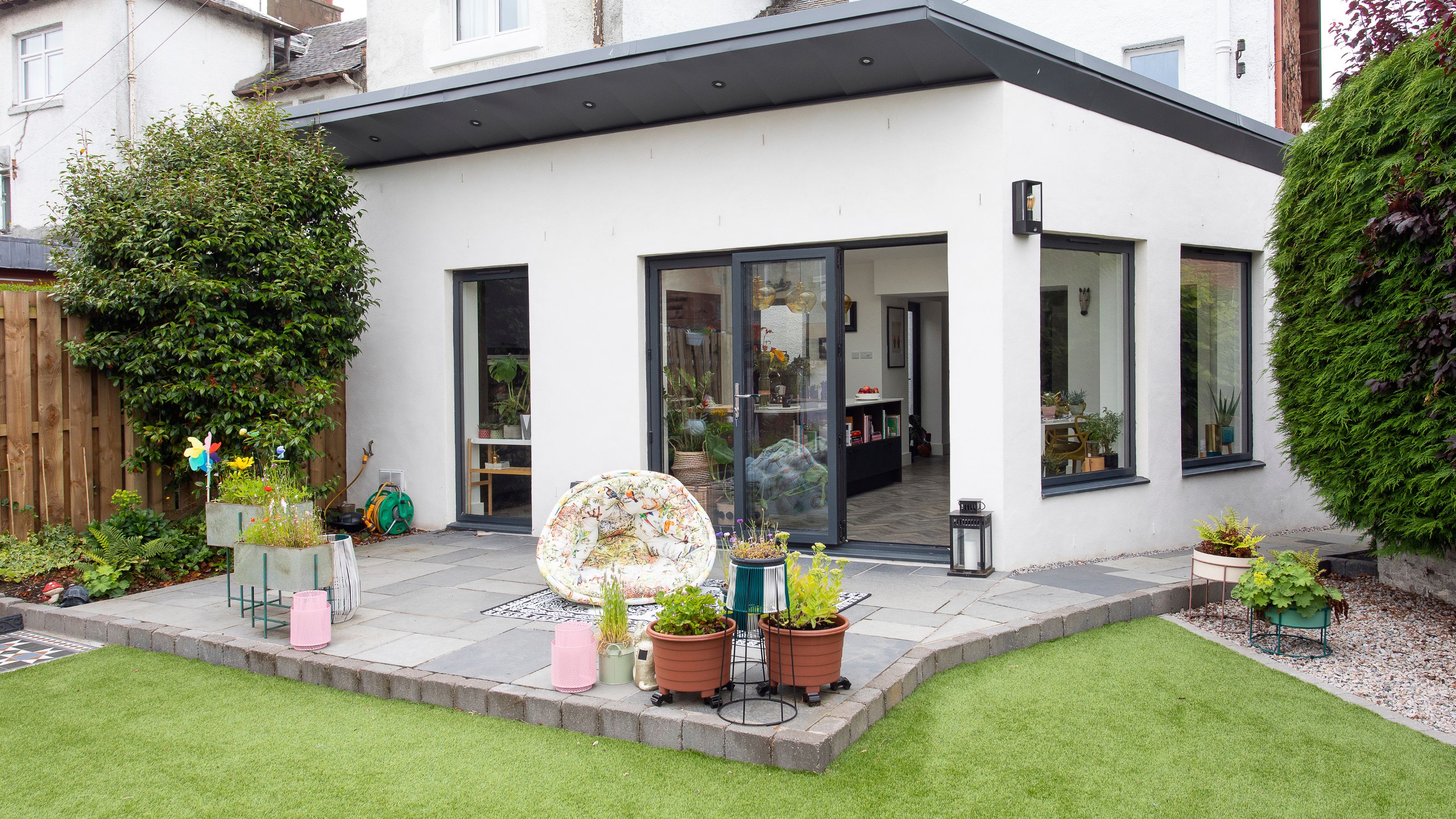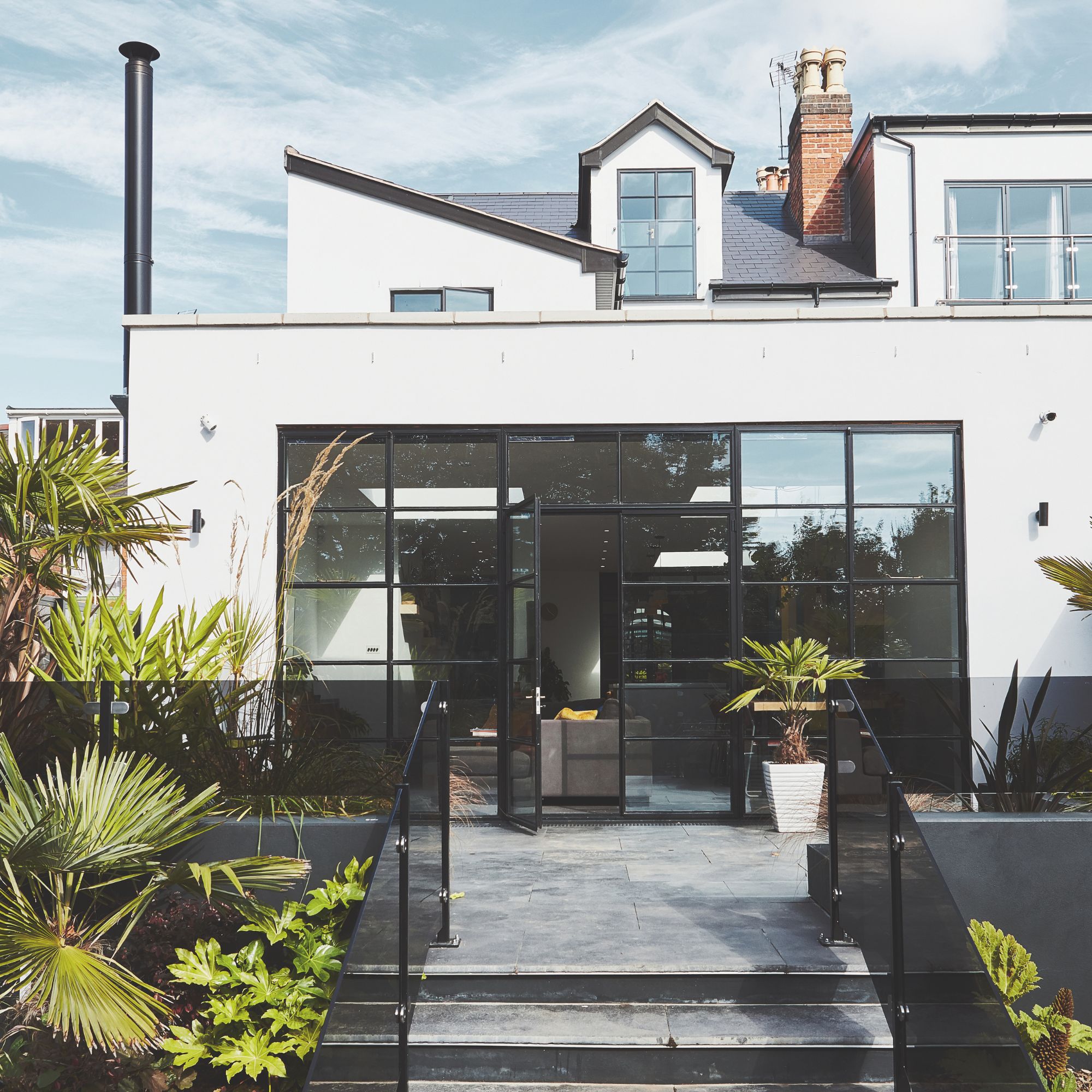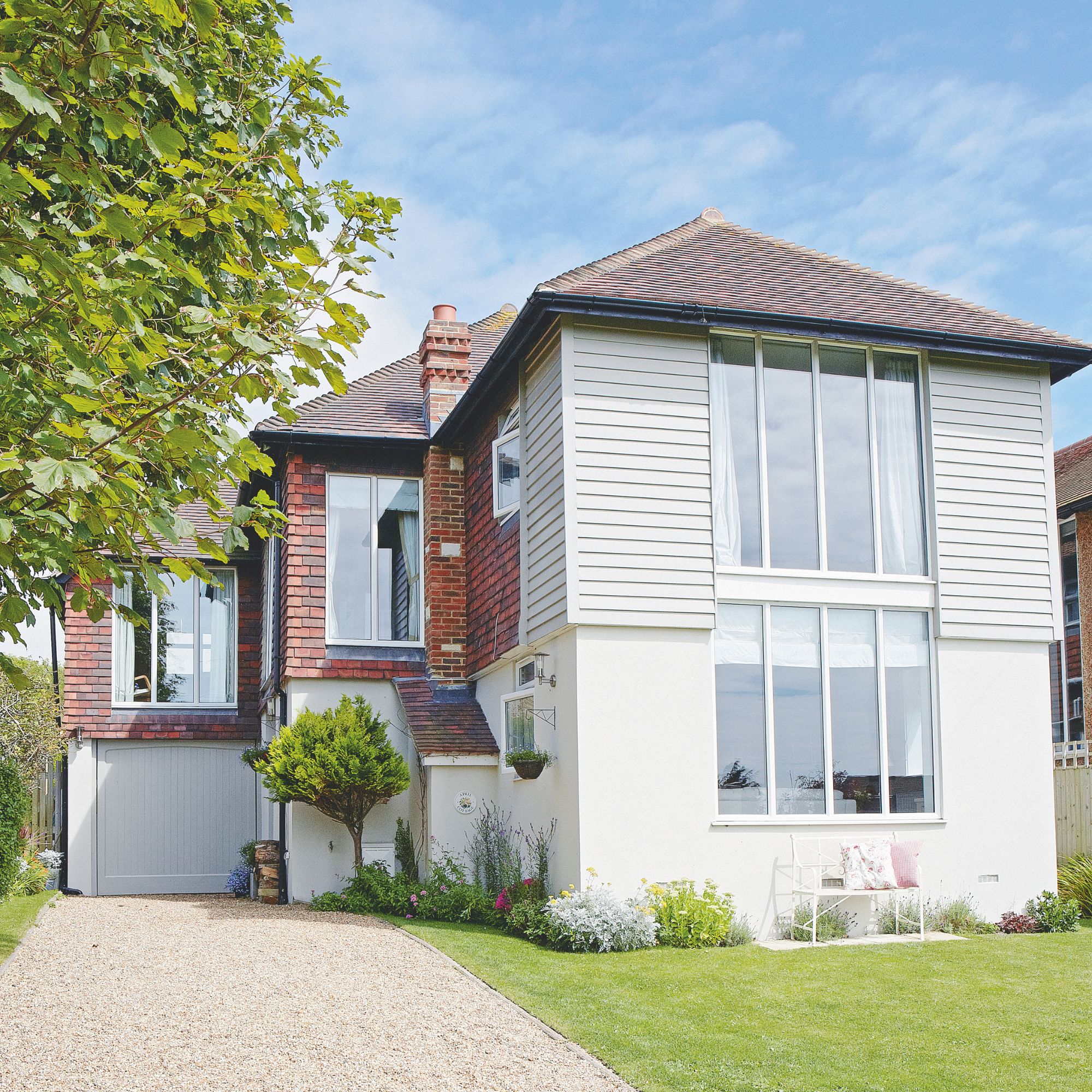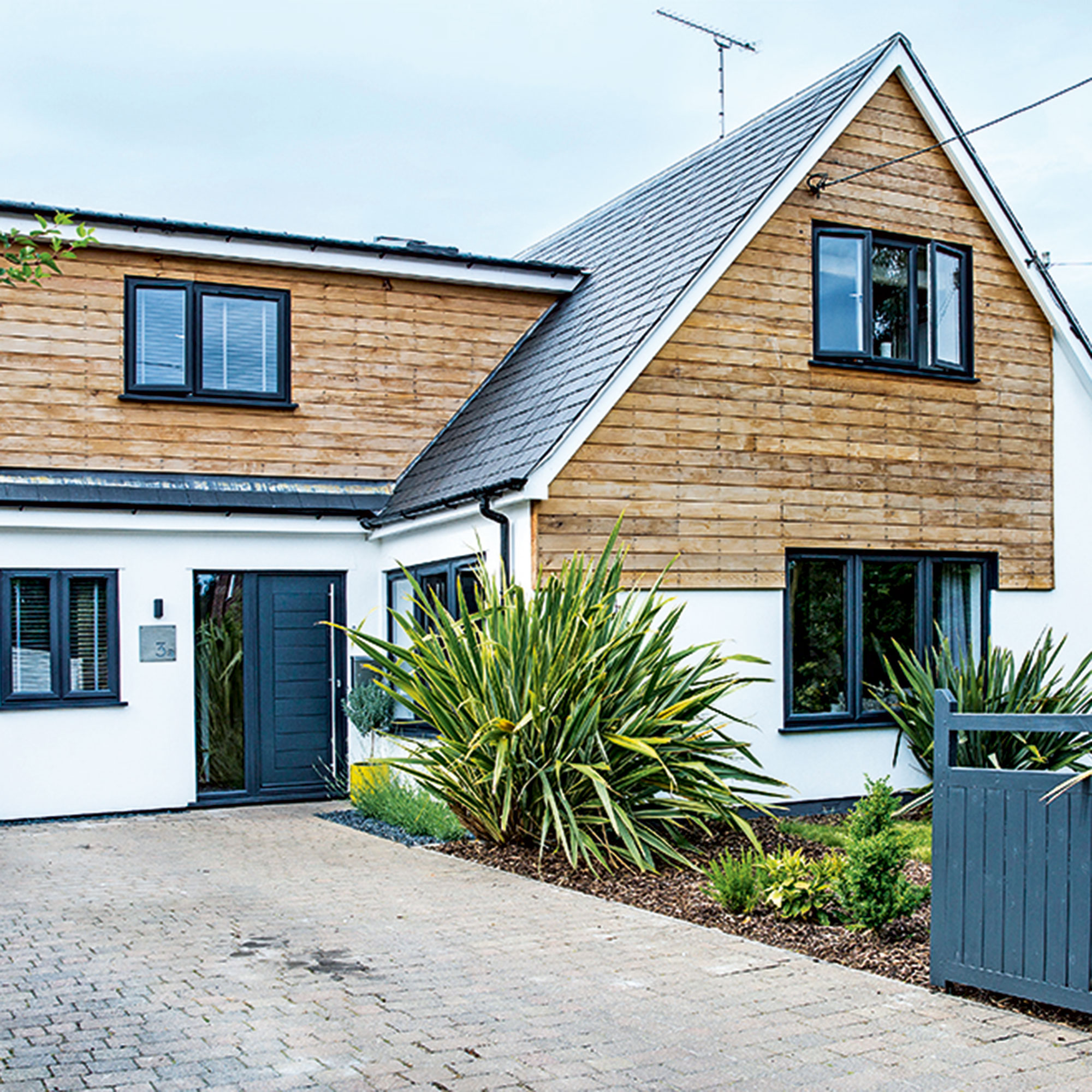What is insulating render and is it a good solution to boost your home’s thermal efficiency? This is what the pros say
Discover the advantages of this solution, plus key installation considerations, to help you decide if it’s the right fit for your home


If you’re planning to boost your property’s thermal performance as part of a renovation project, improving the thermal efficiency of the outer walls can make a huge difference to what you spend on energy bills.
Modern brick homes may have cavity wall insulation that does the job for you (although you can boost the thermal efficiency by adding insulating render too), but in older homes with solid walls, you may need to look methods of external wall insulation instead.
Offering a clean-looking finish and a protective layer against the weather, insulating render is one possible solution that can be added to your home’s exterior walls. But before choosing to render your house, it’s important to do your research into the most suitable render solution for your type of property and its location.
However, if you want to find out more about the specifics of insulating render, how it’s applied and – importantly – how much it costs, keep on reading.
What is insulating render and what is its purpose?

Insulating render can be applied on new and old houses
Before we get into the details, it’s important to lay out the difference between insulated render systems and insulating render. In this article, it’s the latter we’ll be focusing on, so it’s important to get to grips with the difference between these two solutions.
Insulated render systems are a type of external wall insulation that comprises insulation boards of XPS, EPS or mineral wool that are fixed to the outside of a property. These are then finished with a render base-coat and mesh, plus a decorative top-coat, to help prevent heat from leaking out through your home’s walls.
Typically, an EWI system is between 90mm – 120mm thick and comprises multiple layers, so you need to consider the impact the added thickness these layers will have on your property.
Sign up to our newsletter for style inspiration, real homes, project and garden advice and shopping know-how
'However, a new generation of ‘insulating render’ products has emerged over recent years,' says Andy Pyke, technical director at ProofShield. 'They also provide significant levels of insulation by incorporating lightweight aggregates and ceramic microspheres to create air bubbles within the render, which prevent heat flow through the render itself.'
For instance, ProofShield’s ThermoSilicone Render System uses ultra-lightweight expanded Perlite in its base layer to establish an uninterrupted, highly efficient thermal barrier to conduction of heat.
Cornerstone’s Insulating Render, on the other hand, is a dry ready mixed render designed as a lightweight fibred base layer for external applications. Comprised of 100% pure hydraulic lime, recycled glass aggregates and other conservation-suitable additives, this solution is well-suited for homeowners looking to reduce thermal losses from exterior walls. According to data gathered by Cornerstone, a 50mm application of the product will improve the U-value (a measure of heat loss, where lower numbers are better) of a solid wall by 50% or more.
How is insulating render applied?

Insulating render can be used to give your home a fresh new look
Insulating render is applied in exactly the same way as a regular render system – first, the thermal base layer is applied to a depth of 2-3cm before being flattened off. Next, it’s finished with a through-coloured, weatherproof topcoat for a clean, modern-looking finish.
One of the main reasons to apply a render finish to your home is to improve its external appearance and increase its resistance to the elements. Therefore, this type of coating should only be applied to an existing property if the walls are structurally sound and free from damp, otherwise you risk trapping moisture inside the structure of the wall itself.
While a fresh, rendered finish offers a sure-fire route to boosting your home's kerb appeal, for the best possible results it’s worth bringing in the professionals to do the job for you. A badly applied layer of render can ruin the look of your property, so always be sure to check the standards of the renderers you employ to make sure their work is up to scratch.
How much does insulating render cost?

Think about your home's exterior when you are looking to boost thermal efficiency while renovating
There are multiple factors that’ll affect how much it costs to finish your house exterior with insulating render, including the size of the area you’re planning on applying the render across and the condition of the substrate beneath.
'If we make some assumptions that the substrate to be rendered is reasonably sound, then the costs of using an insulating render versus a regular render are very close to one another,' says Andy. 'This may sound a little counterintuitive, but when you consider that around two thirds of the total cost for re-rendering your home is made up of labour and access (scaffolding) and that only one third or so is the actual materials, it starts to make more sense.'
ProofShield’s ThermoSilicone insulating render system costs around £18 per m2 in materials, and typically around £60 per m2 for installation. 'If you went for a regular, non-insulating render system, you might save £4-5 per m2 in material costs, but the installation costs would be the same,' says Andy.
Is insulating render a good idea?

Combined with cladding, insulating render can give your home a contemporary look and boost kerb appeal
Insulating render is like a breathable jacket that’ll freshen up the outside of your house, regardless of its age or construction type. Therefore, it’s a solution that’s suitable for many homes in need of thermal and aesthetic improvements.
However, there are some exceptions. For instance, if your home has issues with damp, adding a layer of render over the top isn’t going to fix the issue – so you’ll need to address the underlying cause of the problem before applying insulating render.
When it comes to older buildings, according to Andy, there’s a lot of developing research and evidence on the need for breathability. 'If you wrap up an old building in an airtight layer of insulation boards (XPS or EPS), then it completely blocks the path of the moisture vapour that would normally have been able to transpire through the walls, and can then lead to problems with mould growth triggered by condensation.'
Traditional sand and cement renders can also trap moisture within walls in much the same way. 'Conversely, insulating render is highly vapour-permeable and actually helps balance moisture levels, reducing the risk of mouldy walls,' says Andy.
Cornerstone’s insulating lime render is also highly vapour permeable to support moisture management, and is capable of absorbing, storing and buffering excess moisture.
Remember, if you live in a conservation area or any other designated zone, you may need to apply for planning permission if you want to re-render external walls. Building Regulations approval may also apply, depending on the extent of the work you’re carrying out – always check with your local authority for peace of mind before you start.

Rebecca Foster started her journalism career in Bangkok in 2013, where she worked on the in-house editorial team at a luxury homes magazine. Since then, Rebecca has contributed to numerous property and interiors titles in the UK and Southeast Asia. She re-located to London in 2015 to work at one of the country’s leading self-build and home renovation magazines. In 2017, she left her job to split her time between freelance journalism and teaching yoga.
You must confirm your public display name before commenting
Please logout and then login again, you will then be prompted to enter your display name.